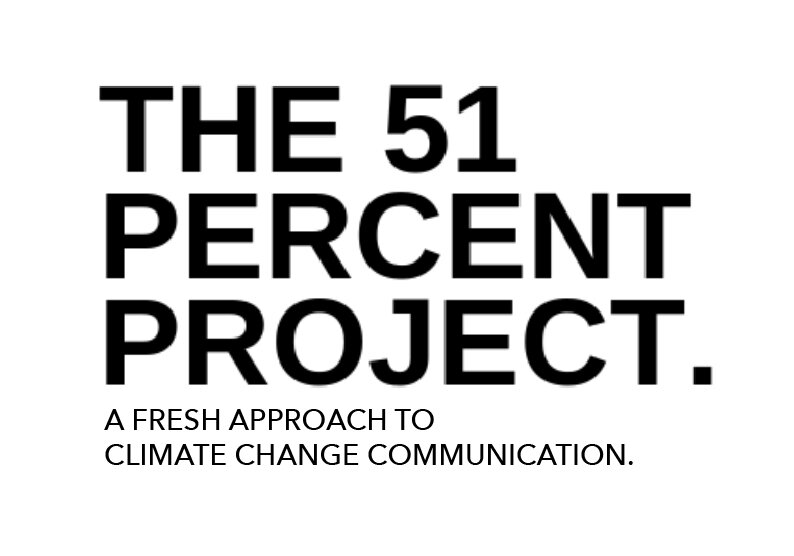HOW TO SOLVE THE BIGGEST PROBLEM THE WORLD HAS EVER SEEN: COMMUNICATE BETTER ABOUT IT.
Introduction
The 51 Percent Project targets the growing majority of Americans who are concerned or alarmed about climate change. If these 180,000,000+ people are engaged on the issue and join efforts to accelerate decarbonization, we all take a big step forward to properly address this incredible global challenge.
We use best principles from the vast body of scholarly literature devoted to the study of climate change communications (fig.1). And, we use common sense to translate the scholarly findings, which are sometimes difficult for a regular person to grasp, into practical guidance that anyone can use to have a conversation about this.
Figure 1. The 51 Percent Project identifies best practices and principles from established (and voluminous; see search results at left) scholarly literature on communications, and on ‘climate change communications’ in particular.
WHY “THE 51 PERCENT”?
When this project was conceived, in March, 2018, the Yale/George Mason climate change public-opinion team put Alarmed or Concerned at 51%: 21% Alarmed + 30% Concerned.
“The 51 Percent Project” seemed like a good name for the nascent initiative: it’s a majority, but only ever so slightly — a precious margin quivering with potential to go up … or down.
Figure 2. December, 2018 data shows 29% Alarmed and 30% Concerned = 59% of Americans.
A majority of Americans are moving from complacency to concern, and demand for smart policies is growing. But let’s be clear. Nothing short of a swift, sweeping, super-size transition to zero emissions will do. We must try every viable positive alternative to our carbon-driven way of life. Our assignment is to develop a rich playlist of solutions commensurate in scale and relentlessness to the problem, more ambitious than anything human beings have ever created.
Fortunately, multiple solutions are already underway, but progress can be painstaking when producing aviation fuel alternatives, carbon capture technologies, or a national highway network of electric charging stations —and progress is delayed by “business-as-usual” attitudes.
The greatest solution is us. If all of us — or, as the 51 Percent work targets, a majority of us — demand solutions and are enthusiastic about their efficient deployment; then policy, investment, and adoption of these brilliant innovations will flow.
what’s driving public concern about climate change?
Why did the percentage increase significantly, from 51% to 59%, in just nine months, from March to December, 2018?
During the summer and fall of 2018, powerful storms, floods, heatwaves, precipitation events, and massive out-of-control wildfires raged around the world in familiar locations and new ones. “Unprecedented” became a familiar word as expert analysts described record-high temperatures at night, or the speed with which a hurricane picked up speed, or the velocity of a fire “tornado.”
Two landmark reports were issued, notably the International Panel on Climate Change (IPCC, October), and the fourth National Climate Assessment (NCA4, November), both bristling with reasons to end emissions — Now.
These dire warnings from the scientists were picked up by media, who were also covering the disasters.
By December, 2018, the number of Alarmed and Concerned jumped to 59%. An unprecedented majority of Americans now say the global warming issue is personally important to them: 72%.
Figure 3. THE AMERICAN PUBLIC CONNECTS THE DOTS. December, 2018 data shows 29% Alarmed and 30% Concerned = 59% of Americans.
It’s not only Yale reporting this expanding public concern about climate change. A December Wall Street Journal/NBC News national poll showed that 66% of Americans believe that action is needed to address climate change, with 45% calling for immediate action. More here.
who are our best communicators?
No offense to scientists, but they’re typically not the best communicators for most people. That’s not their job.
Whose job is it to communicate effectively, creatively, and impactfully?
Again, a simple answer: specifically, this is the role for our talented communications people: writers, producers, influencers, editors, publishers, teachers, branding gurus, artists, creative content disruptors, community organizers, team leaders and coaches, rockstars, advocates, and activists. All can use the trust they’ve earned to move their followers from complacent to informed to concerned to involved. (More on the Trusted Messenger principle here.)
Many are doing just that. But the scientists warn we need much more action. Exponentially more.
Meanwhile, a significant body of scholarly research about climate-change communication, continually updated by experts in the field, is mostly hidden from consumers and their mainstream communicators — as scholarly research tends to be. This research contains solid gold: confirmed best practices we can use to engage our vast consumer public — or at least, to begin, those who are ready to participate.
Along with their own brilliant concepts, communicators can use these findings to create more powerful content, which will invigorate the general public and help accelerate the massive clean-energy transition underway.
zeal STATEMENT
Our climate emergency would be unfathomable if we didn’t have the resources, technology, and sheer trillions to fix it. But we do.
To that recipe for success, let’s add natural attributes which make us Homo sapiens and not salamanders: courage, integrity, intelligence, imagination, ambition — and our ability to communicate with one another.
Every one of us has a role to play in solving this epic emergency.
Even babies can help, by reminding all of us that the world they are on track to inherit will be, increasingly, utterly inhospitable to human life.
Let’s get on with it.
Key indicators show a significant increase in public concern about climate change from 2013 to 2018. Source: Climate Change in the American Mind: December 2018, Yale/GMU.




